This is a continuation of a series of posts on the Nikon D850. You should be able to find all the posts about that camera in the Category List on the right sidebar, below the Articles widget. There’s a drop-down menu there that you can use to get to all the posts in this series; just look for “D850”. This is equally a post about the Sony a7RIII, and is also tagged as such.
I spent all day yesterday refining my focus plane testing. I’ve gone to a low-contrast matte checkerboard on the ramp to make lighting less critical. It works fine with the LensAlign Pro ramp angle set to 4, but not at the lower settings, which would be desirable, for reducing the way that field curvature can look like focus shift on this test. That’s a theoretical problem, but I would like to have a long ramp that takes up less of the image height. It’s very easy to align the focusing board of LensAlign Pro; the built-in alignment aids are well thought out, and work well. However, it’s taken me a while to figure out which of the aids works best. I’ve finally settled on the one on the lower right of the target; it’s closest to the center of the ramp. I’m now lining that up and, for autofocus testing, moving the focusing point up an to the left so that it covers the target.
I’ve experimented with leaving the lens axis on the alignment point and with moving the camera to the right after alignment so that the lens axis is parallel to the aligned position, but centered on the middle of the ramp. You’d need a focusing rail mounted sideways to make that shift with the camera mounted on a tripod, but with a camera stand, it’s easy and no additional gear is required. Turns out that it doesn’t make much difference. Here’s what the focus shift of the Sony Zeiss 55 mm f/1.8 (Zony 55) looks like:
I’ve plotted the three Adobe RGB color channels. The graph presents displacement of the image projected on the sensor from the desired green-channel focal plane. Negative numbers indicate front-focusing. The image-plane shift is in micrometers (um). The blue focus locations are separated from the red and green ones because of the longitudinal chromatic aberration (LoCA) of the lens. The dots indicate the results for each of the ten exposures at each f-stop. I’ve made lines indicating the average (aka mean or mu) of the sample set bolder and added thin lines above and below the means that are one standard deviation (sigma) away from it. In this case, the spread is so tight that it’s hard to see the individual lines.
Here’s one thing that the last few days of testing have really driven home to me: focus shift varies with distance. The above test was done with a target distance of 1.2 meters. A few days ago, I tested the very same lens at somewhat further away, and the focus shift was in the opposite direction. There’s another thing that’s strange about the plot above: LoCA varies with f-stop. In fact, the blue plane is focused behind the green plane when the lens is wide open, and in front of it as it is stopped down. The red plane gets closer to the other two as the lens is stopped down.
Here’s what the plot above look like in terms of the circles of confusion implied by the focus shift defocusing:
Let’s ignore the red and blue planes and look only at the green, which is where most of the luminance signal is. At worst, the focus shift is making the COC diameter well under the pixel pitch.
Now we’ll look at the focus shift of the Nikon 58 mm f/1.4 lens on the D850:
It is far more severe than the Zony 55’s shift.
Looking at the CoCs:
This is a lens that needs to be focused at the taking aperture until at least f/4, where it can be focused there.
Now we’ll look at both lenses using AF-S. The Nikon is using the finder-based PDAF, and the Sony is doing whatever-the-heck-it-does with a combination of PDAF and CDAF. I used the electronic shutter for the Sony and EFCS for the Nikon. There was +14 AF Adjust dialed into the D850 to get the average focal plane right wide open.
Here are the CoCs:
Plotting the shift and the resulting CoCs on the same graph, with the D850 lines dotted:
Just like the long zooms tested a few days ago, there’s more variability with the D850. If we just concentrate on the green channels, the Sony CoCs are within 3 pixel pitches from mean-minus-sigma to mean-plus-sigma.
Next up: AF-C.
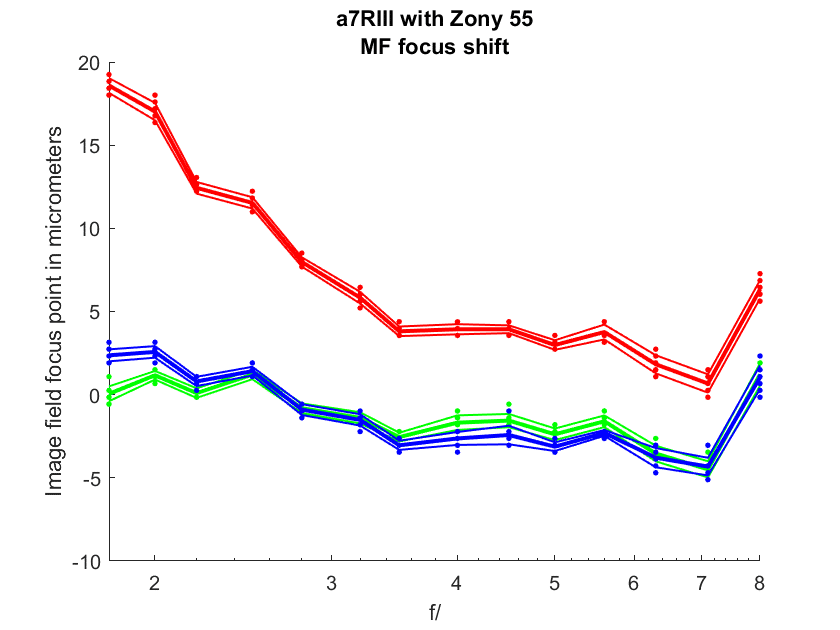
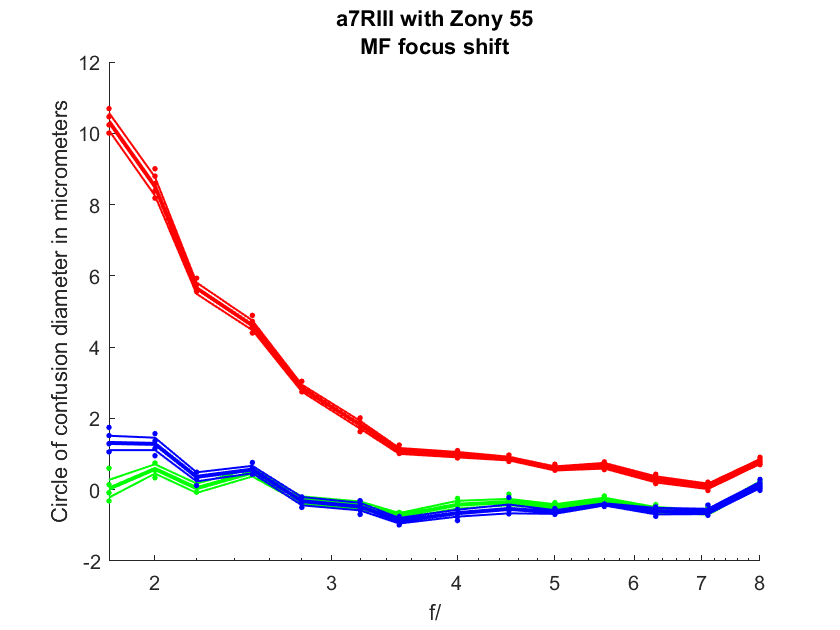
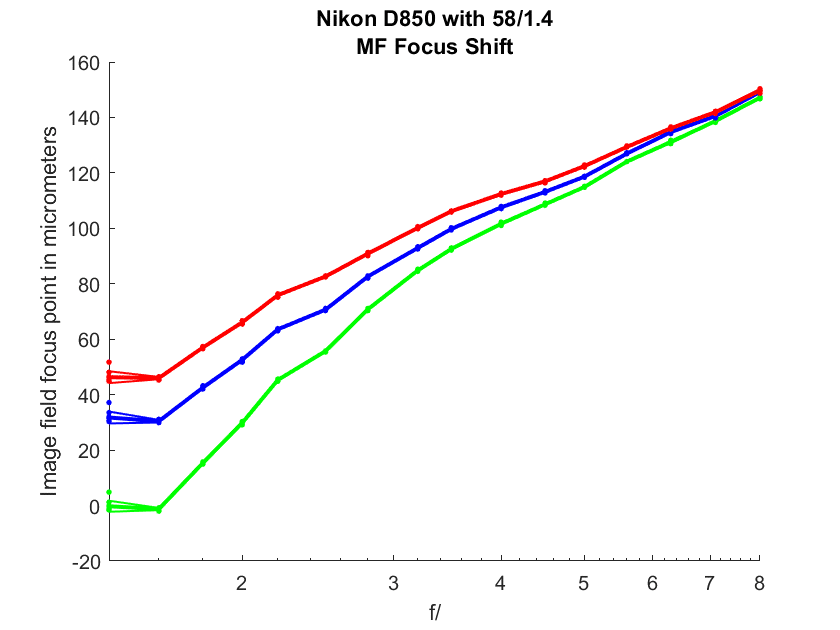
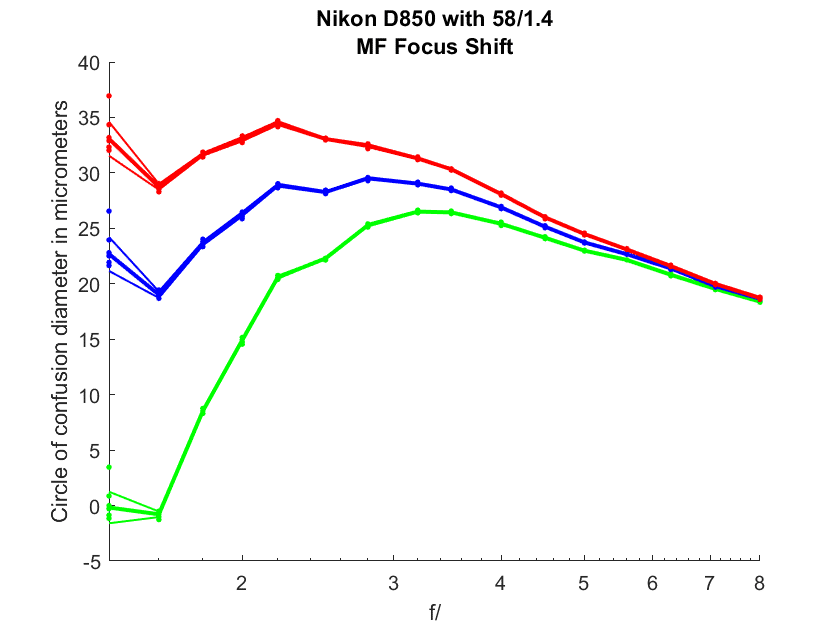
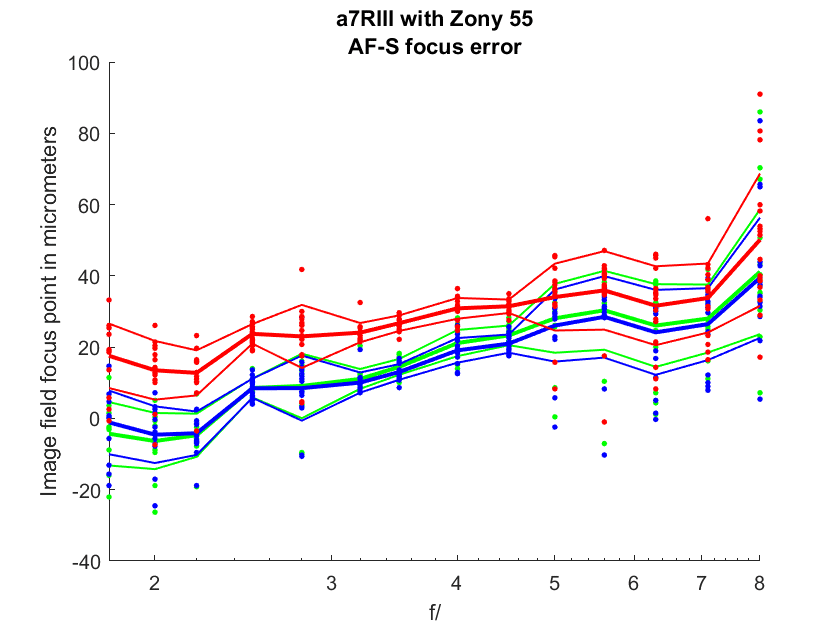
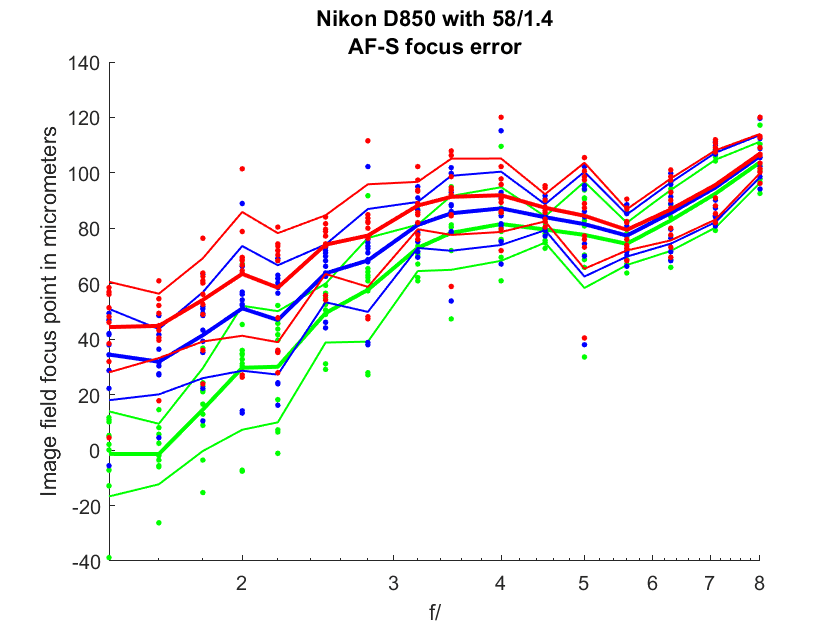

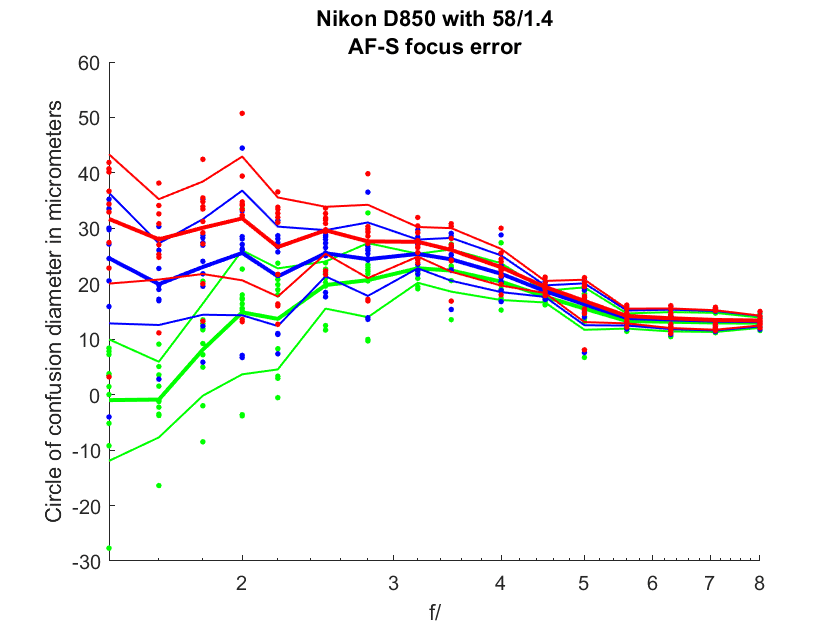
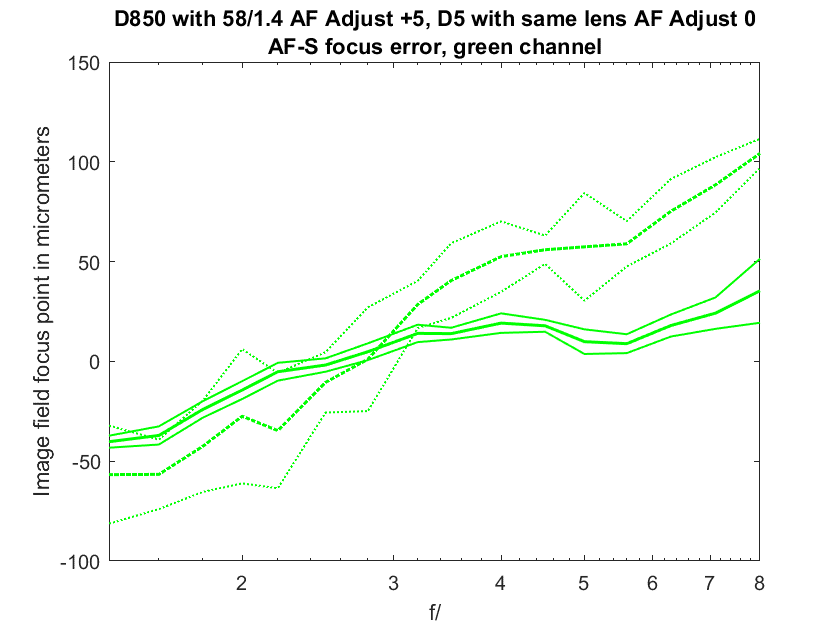
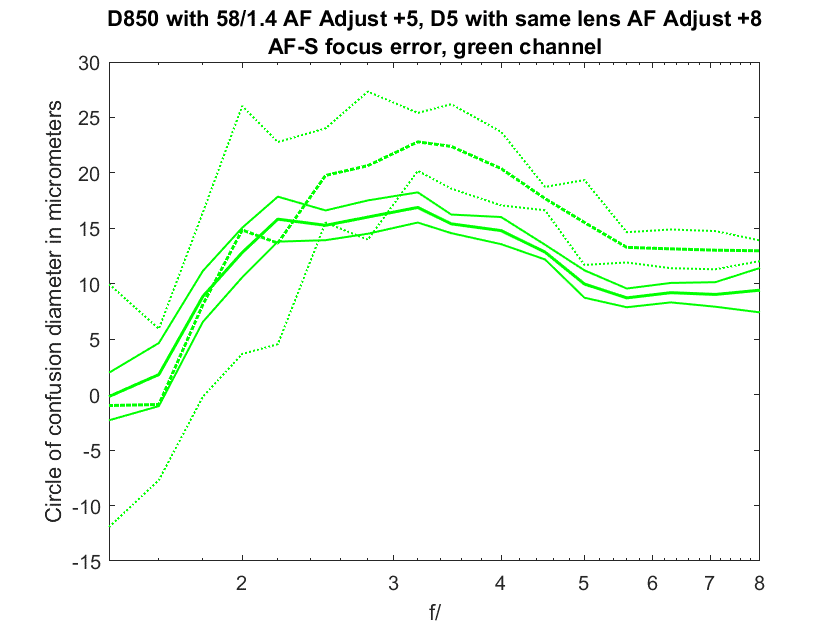
If the LoCA varies with f-stop, then isn’t that spherochromatism, where the spherical aberration changes with wavelength?